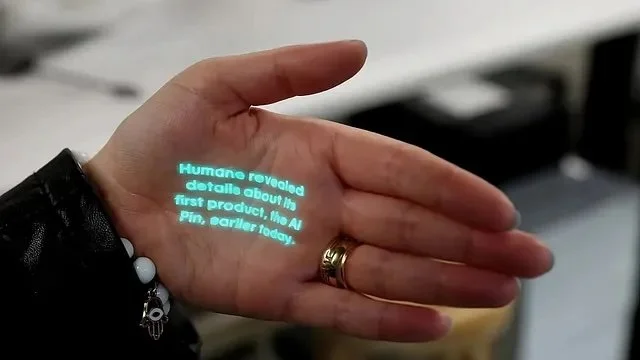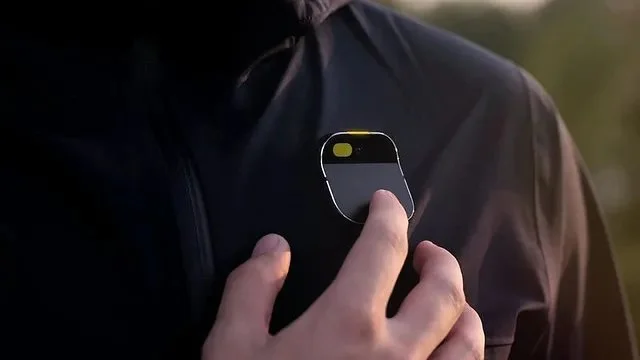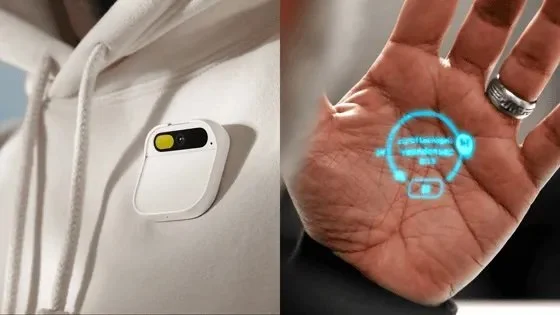The Future of ‘Being Digital’: The Next Five Years
Nicolas Negroponte’s “Being Digital,” published in 1995, is an essential read for anyone interested in technology’s application and its impact on us all. Nicolas’s predictions, both accurate and insightful, roadmap the seamless integration of technology into our daily lives. The book anticipated a shift from the physical to the digital realm, where bits would become more critical than atoms. This concept of digitisation is pivotal to understanding and forms the basis of functionally integrated thinking, a phrase coined by Barry Wacksman. It can be argued that Negroponte’s transition from ‘atoms to bits’ underpins the structural foundation of ‘Functional Integration’ and, by extension, every digital ecosystem, from Apple to Netflix.
Many of Negroponte’s forecasts have materialised, particularly with the rise of digital media, virtual interactions, and the IoT (Internet of Things).
Understanding User-Centric Design
In today’s digital landscape, user experience is paramount. The relentless drive to understand and personalise user interactions has positioned companies like Apple as benchmarks of success. They embody Theodore Levitt’s philosophy, focusing on the solution, not soley the product. Users seek not technology for its own sake but the experiences and solutions it offers. Business analysts, technology reviewers, and users often praise Apple’s hardware as beautifully crafted objects. However, Apple’s real magic lies in their ecosystem and, by extension, every device they produce.
Creating experiences with users at the core is crucial, yet it is also essential to recognise that users are limited by their understanding and pre-existing behavioural patterns. Henry Ford’s famous quote encapsulates this challenge: “If I had asked people what they wanted, they would have said a faster horse.”
The appropriate approach is to combine first-principle thinking with digital thinking, incorporating user centricity, or, as Nicolas states, transitioning from atoms to bits. So, what does Negroponte’s roadmap suggest for the future?
We are already familiar with Siri and Alexa, and the growing prevalence of voice-activated assistants. Coupled with a surge in AI, we are moving towards a world where voice and gestures will become primary means of interaction. This shift will redefine accessibility, offering more intuitive and natural ways to engage with technology.
The Convergence of Technologies
As technologies like AI, machine learning, IoT, and cloud computing converge, we see the boundaries between hardware and software becoming increasingly blurred, with more services becoming ‘digital’. Traditional operating systems may soon yield to AI-driven interfaces — agents that anticipate our needs and act on our behalf. Digital entities that understand us and function as personal assistants.
Consider the steps involved in sending an email:
Launch Mail Client
Click new email
Add recipient
Type message
Receive an out-of-office reply
Realise it is the recipient’s birthday
Now, introduce the AI Agent
1. Ask the agent to send an email to Jo
2. The agent inquires which Jo and lists the three in your contacts
3. Select the correct Jo
4. Compose the message
5. The agent suggests adding a birthday greeting to your message
The Hu.ma.ne AI Pin, reminiscent of the Star Trek comms badge, signifies a step towards this future. These agents will not only execute commands but also understand context and offer proactive assistance, fundamentally transforming our interaction with the digital world.
This new device/software will influence our physical world, how we work, shop, and spend our leisure time.
Shopping with Agents
Shopping will be deeply influenced by advancements in AI and digital ecosystems, transforming it into a highly personalised and interactive experience. Virtual reality (VR) and augmented reality (AR) technologies will allow customers to virtually try on clothes or see how furniture looks in their home before making a purchase. AI-driven personal assistants, could suggest products based on your past preferences, current trends, dietary needs and even your emotional state or upcoming events in your calendar. Agents will automatically order routine items for you, like groceries or household supplies, ensuring you never run out. The concept of a ‘shopping list’ could become obsolete as AI understands and anticipates your needs.
Cooking a Meal with Agents
Cooking is set to become more interactive and user-friendly, thanks to digital integration. Smart kitchens, equipped with IoT devices, will be standard, with appliances like refrigerators tracking your food inventory and suggesting recipes based on available ingredients. AI assistants could offer step-by-step cooking guidance, adjusting recipes to suit your dietary preferences and even your current mood.
Imagine a scenario where your kitchen appliances communicate with each other: your fridge knows what ingredients are inside, your oven pre-heats automatically for the recipe you’ve chosen, and your dishwasher sets itself to the right cycle for the dishes you’ll use. Advanced AI might even suggest new culinary experiments based on flavour profiles you’ve enjoyed in the past, transforming the experience of cooking.
Planning a Holiday & Traveling with Agents
Holiday planning will be revolutionised by AI and machine learning, making it a highly personalised and efficient process. AI travel assistants could plan your entire trip based on your preferences, budget, past experiences, and current travel trends. They could suggest destinations, book flights, accommodations, and create itineraries that align with your interests.
Virtual tours could allow you to ‘visit’ destinations before booking, helping you decide where to go. AI could also monitor real-time data like weather patterns, political stability, and even local events, to suggest the best time to visit a particular place. During your holiday, digital assistants could serve as personal guides, offering information about local sights, translating languages in real time, and even recommending restaurants or activities based on your preferences.
Health Management with Agents
Health management is poised to be deeply influenced by AI, IoT, and digital ecosystems, making healthcare more personalised, proactive, and accessible. Wearable technology, like smartwatches and fitness trackers, will evolve beyond basic health metrics to provide comprehensive health monitoring. These devices could track not just your physical activity and sleep patterns, but also vital signs like blood pressure, blood sugar levels, and even early signs of illnesses.
AI-driven personal health assistants, could continuously analyse your health data to provide personalised health advice, coupled to personalised nutritional data, they could help you to eat yourself healthy. Remind you to take medications, alert you to potential health issues before they become serious, and even book doctor’s appointments for you.
Telemedicine will become more sophisticated, allowing for more accurate and efficient remote diagnosis and consultations. Doctors might be able to monitor your health remotely in real-time, providing timely interventions when needed. AI algorithms could assist doctors in diagnosing diseases, even those that are rare or have complex symptoms, by cross-referencing vast medical databases.
Mental health could also benefit from these advancements. AI-powered apps or devices could provide therapeutic support, monitor mental health markers, and offer interventions like stress-relief exercises or alerts to seek professional help when necessary.
Healthcare personalisation will reach new heights, with treatments and medications being tailored to individuals based on their genetic makeup, lifestyle, and specific health data. This could lead to more effective treatments with fewer side effects.
Agents will move health management from reactive to proactive care, with technology playing a key role in monitoring, preventing, and even predicting health issues before they arise.
Atoms to Bits
We are likely to see technology become even more integrated into our lives, serving as an extension of our senses and cognition. The trajectory that Negroponte outlined over two decades ago is becoming increasingly apparent. As technologies continue to converge (atoms to bits), the influence of these bits on our physical world is becoming clearer. As we embrace these changes, we’ll discover that the essence of technology lies not in the devices we hold but in the experiences they enable.



